Lighting in single camera is much more complicated as you must set the lighting for each shot individually which gives the scene a certain tone and allows the director to experiment. In multi-camera production the lighting inst as varied as the lighting should work for all angles which makes all of the shots look exactly the same or similar, because of this it is hard to give off different tones and styles and because of this it can sometimes look fake.
When filming in single camera it is important to start the scene before you plan to start it leaving a space at the beginning and at the end to make it easier to match up audio with the shot and can also avoid noticeable jump cuts. Just like any other production sound effects and music would be added in post production. In multi-camera productions it is easier to mic each character separately as it would be direct and clear, for some productions the point of the show would be self-aware that they are being filmed for example talent shows such as X factor would use visible mics as they are filmed. In single camera productions it would be easier to use a directorial microphone to get all of the scenes audio. This method is used as the director can shoot the scene without the microphone being seen which in Multi-camera would be hard to keep the equipment out all of the different shots compared to one shot. When shooting a scene you must be aware that extra audio will be added to the scene and do not always need to see the dialogue being spoken such as narration, over the shoulder shots or cutaways. In these cases the audio would be recorded separately and be edited over the top of the visual shot.
Coverage is the amount of footage you get for each shot and is important to get different options for each scene so when it comes to editing you will be able to use the best out of many rather than being stuck using a shot that isn't quite right, has bad acting or has a continuity error. If you are filming with a digital camera it is cost effective to shoot as much as you can as it is stored on an SD card and would be costly however if shooting with film would be more costly the more takes you do and would be ideal to rehearse without cameras rolling to get it perfect before shooting the scene. When shooting single camera it is important to do scenes more than once changing the camera angle to get various shots to give the editor as much chose as possible. In single camera production it is important to get a master shot of the whole scene to edit around, these would be either wide or long shots to capture everything in the scene before cutting into different angles of the scene. In multi-camera production there are many cameras already capturing different angles so pauses in shooting wouldn't be as frequent and would shot large amounts of scenes in one go needing large amounts of dislodge to be learnt and memorized compared to single camera where shots would be filmed separately giving actors breaks often.
For both types of productions the editing stage can take a large amount of time as there is a lot of footage to go through and edit together to get the final product. In multi-camera productions there is a lot of wasted footage that isn't needed however is cheaper and less time consuming compared to single camera production which would take longer to film but more of the footage is used. In single camera production it is normally filmed in bunches depending on locations and cast needed. If a program is filmed live it is always Multi-camera as it would need to jump to different angles as quick as possible and only multi-camera can do that, this would be used for live competitions such as X Factor and also used for sporting events such as football. Live filming cannot be done live and can only be edited together after production. Shot logs are essentially a list of shots filmed along with a description on how usable the shot is in the final product.
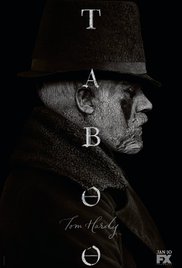 In TV production their are many different genres which use either Single camera or Multi-camera productions. Period dramas are set in specific eras of the past to make the audience feel like they are watching people of that time, because of this they have to give it the correct atmosphere costumes and dialogue and are used to create the appropriate tone and style. As it needs to have a certain feel and style it would be filmed using single camera production so the director can have full control over what the viewer is seeing. An example of this is a new TV show from the BBC called Taboo which is set in industrial England and has a very dark and gritty tone only captured from the way it is filmed.
In TV production their are many different genres which use either Single camera or Multi-camera productions. Period dramas are set in specific eras of the past to make the audience feel like they are watching people of that time, because of this they have to give it the correct atmosphere costumes and dialogue and are used to create the appropriate tone and style. As it needs to have a certain feel and style it would be filmed using single camera production so the director can have full control over what the viewer is seeing. An example of this is a new TV show from the BBC called Taboo which is set in industrial England and has a very dark and gritty tone only captured from the way it is filmed.Crime Drama is a genre based around following a criminal or authority figures and are story based meaning that the director needs to focus on the plot and character development. Crime Dramas are typically single camera as the characters would need to be focused on through different shot variations to move the plot forward. Single camera would allow the filmmaker focus on plot defining moments allowing it to be captured in artistic ways. Lighting is a huge factor in crime dramas as it would normally have dark themes meaning the lighting would also have to fit the themes. An example of crime drama is the BBC's Sherlock which is based around a detective who solves crimes around a city and has many dark themes.
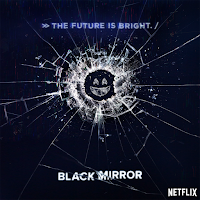 Horror is a genre based around scaring the audience by using supernatural insentience or murderers and the genre is used to scare the audience or make them feel uncomfortable. The technique used most is a jump scare which is the director using the camera to make something surprising happen to make the audience react and because of this horror is typically single camera as the filmmaker needs to personally chose where the camera will go and move which cant be done in multi-camera. Horror is also story based meaning the camera needs to be able to focus on different events and objects which can be achieved using single camera. An example of this is black mirror which is a TV based around different futuristic technology and the negative effects it would have on humanity which needs to focus on different events which could only be achieved through single camera.
Horror is a genre based around scaring the audience by using supernatural insentience or murderers and the genre is used to scare the audience or make them feel uncomfortable. The technique used most is a jump scare which is the director using the camera to make something surprising happen to make the audience react and because of this horror is typically single camera as the filmmaker needs to personally chose where the camera will go and move which cant be done in multi-camera. Horror is also story based meaning the camera needs to be able to focus on different events and objects which can be achieved using single camera. An example of this is black mirror which is a TV based around different futuristic technology and the negative effects it would have on humanity which needs to focus on different events which could only be achieved through single camera. 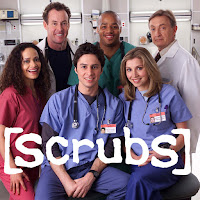 Comedy is a genre based around making the audience laugh and relax using jokes and situations you can relate to. Comedy sitcoms can be filmed in both ways with the single camera being more story based and Multi-camera being more character based as actors are allowed to react naturally as their reaction would be in the same shot rather than separate. Single camera is used to show events through the protagonists eyes compared to multi-camera which makes you fell like you are there with the characters experiencing events with them. An example of a sitcom using multi-camera is Friends which is a TV show about a group of people living in New York and it is filmed with many cameras around a set and reuses the same sets for most of the production. An example of single camera is Scrubs which is a TV show about medical staff in a hospital and uses various locations as it is single camera.
Comedy is a genre based around making the audience laugh and relax using jokes and situations you can relate to. Comedy sitcoms can be filmed in both ways with the single camera being more story based and Multi-camera being more character based as actors are allowed to react naturally as their reaction would be in the same shot rather than separate. Single camera is used to show events through the protagonists eyes compared to multi-camera which makes you fell like you are there with the characters experiencing events with them. An example of a sitcom using multi-camera is Friends which is a TV show about a group of people living in New York and it is filmed with many cameras around a set and reuses the same sets for most of the production. An example of single camera is Scrubs which is a TV show about medical staff in a hospital and uses various locations as it is single camera. Soap opera is a genre based around real life situations and normally contains a lot of drama. soap operas are usually filmed with multi-camera production as lots of characters are used it is easier to film them together and as scenes would take place in the same areas it would be necessary to make a set which is perfect for multi-camera. Soap operas can also be single camera especially if a real house location is needed as it would be impossible to maneuver equipment in such spaces.
 There are also different formats in which a show can be filmed and the first type is a series which a run of episodic programming with a set main cast that doesn't change but the situation/story line changes with the character having to deal with something different every episode. There can be sub plots that run through the whole show but isn't the main plot. An example of this is The Simpsons which every episode a certain event happens with one of the characters and in the next episode has no connection to the previous. Although character can develop throughout using sub plots that do carry on between episodes. A series TV show would have each episode having its own beginning, middle and end. A series is commissioned in episodes rather than seasons and would be given a set number of episodes to fill out.
There are also different formats in which a show can be filmed and the first type is a series which a run of episodic programming with a set main cast that doesn't change but the situation/story line changes with the character having to deal with something different every episode. There can be sub plots that run through the whole show but isn't the main plot. An example of this is The Simpsons which every episode a certain event happens with one of the characters and in the next episode has no connection to the previous. Although character can develop throughout using sub plots that do carry on between episodes. A series TV show would have each episode having its own beginning, middle and end. A series is commissioned in episodes rather than seasons and would be given a set number of episodes to fill out. 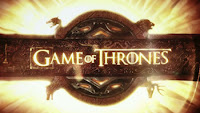 A Serial can also be given a certain amount of episodes however some shows like Soap operas can be never ending. An example of a period costume drama based off of a existing book such as Game of Thrones. In this show the characters are all the same in every episode and the story develops over the course of the season. A special kind of Serial is soap operas which have the same characters from episode to episode and also have a story that develops over the course of many episodes however these shows have no protagonist and have many different characters with equal screen time(Ensemble cast). These shows will also have no end point will continue with other plot points if one ends. An example of a soap opera is Coronation Street which runs on endlessly with no end in sight with no seasons and as result no season finales. Coronation Street is the longest running soap opera, this is because of how quickly they can be produced as they use Multi-camera production which could be filmed much faster than single camera.
A Serial can also be given a certain amount of episodes however some shows like Soap operas can be never ending. An example of a period costume drama based off of a existing book such as Game of Thrones. In this show the characters are all the same in every episode and the story develops over the course of the season. A special kind of Serial is soap operas which have the same characters from episode to episode and also have a story that develops over the course of many episodes however these shows have no protagonist and have many different characters with equal screen time(Ensemble cast). These shows will also have no end point will continue with other plot points if one ends. An example of a soap opera is Coronation Street which runs on endlessly with no end in sight with no seasons and as result no season finales. Coronation Street is the longest running soap opera, this is because of how quickly they can be produced as they use Multi-camera production which could be filmed much faster than single camera. 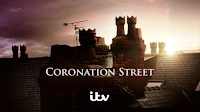
Single Dramas are self contained production that is a one off form normal programming. The story would be told in one single episode just like a TV movie that tells a story in one go without the need for multiple episodes. The minimum running time for these productions is five minutes.
In conclusion single camera production would be lengthy process and would consume more time to produce compared to multi-camera and a result of the longer production time will also cost more than multi-camera. The single camera is also more likely to have continuity errors as different shots from different takes will be used and could have little mistakes that aren't seen when filming. This could also make the scenes feel forced and stunted compared to multi-camera where the actors are playing out the scene in full. Although there are negatives there are also many positives such as the fact that the director has much more control on what is happening on screen and would allow them to get stylized and unique shots to make it look artistic. The lighting can also be controlled much better as you would be setting up lighting for one ca,era and not multiple. Single camera would also help the actors get into character as they will go over their scenes multiple times. There are many other positives such as The production will feel more personal, Variety in location due to less equipment, single ca,era productions can also have much tighter budgets as less equipment is needed and also footage can be shot together some the crew and cast aren't waiting around as long. An example of Single camera is The office which is a show about office workers and there exciting lives.
In conclusion multi-camera production would harder to light each scene as there are multiple cameras to worry about and not just one and because of this some shot will look fake. The director also has very little control over what shots are being filmed as the cameras are set up to get all of the scene at once meaning the director has little control. Location would also be limited as you would need enough space to fit all of the equipment which is why sets are used. There are also lots of positives such as There are far less re-shoots as the whole scene would be recorded at once meaning a scene doesn't need to be redone form many different separate angles, also because of it all being one big scene it is likely to have less continuity errors. In multi-camera production the action doesn't need to stop and start over and over as the whole scene would be captured in one take and this would also look natural rather than cutting loads of different angles to put an action scene together. Filming can be done in a quicker amount of time as more one take scenes would be done. When it comes to live TV multi-camera is the only way to achieve this as a live event or show would need more than one angle and would need different things that need to be record at the same time. An example of multi-camera production is The sitcom Friends which Is filmed on a set and would reuse the same sets often. This show uses multiple camera to get certain characters reactions to the scene and would have a camera focusing on all of the characters at the same time.




No comments:
Post a Comment